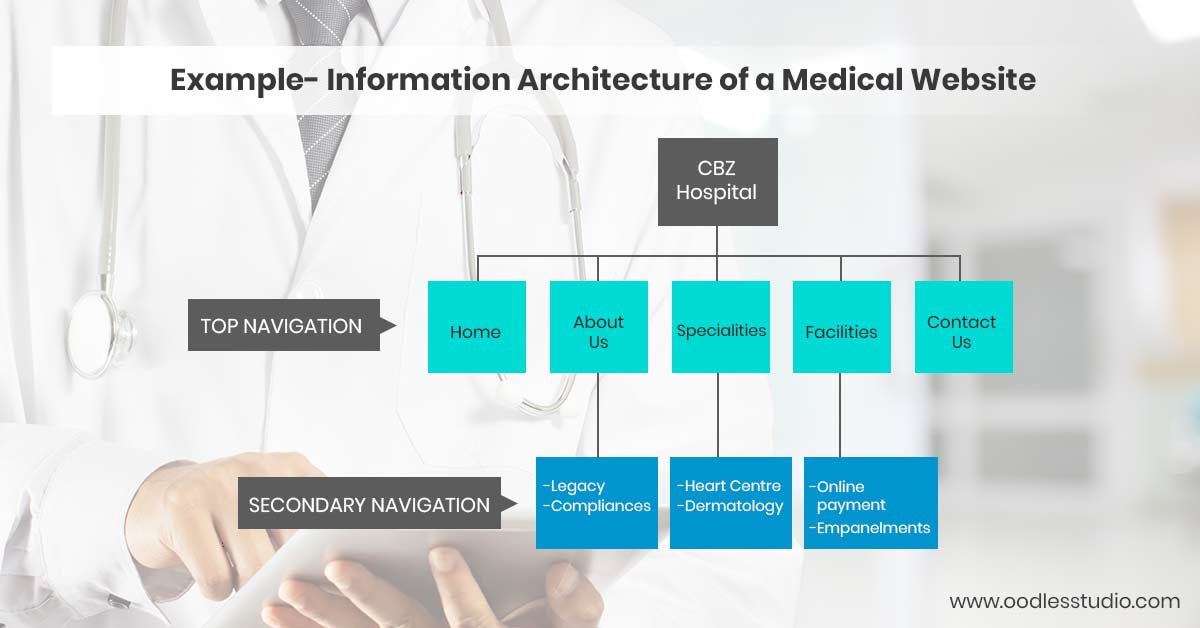An intuitive digital interface is an outcome of carefully planned structure and navigation. The target audience of any business needs a clear and quick way to access necessary information from its website. Information architecture is essential for building a meaningful and effective website structure. Providers of UX research and design services map dynamic user preferences to create them. Through information architecture, UX designers combine the product’s blueprint with user navigation requirements to enhance a website’s overall user experience.
This blog post explains the basic requirements to build the information architecture of a website.
What is Information Architecture?
A website’s Information Architecture or IA defines the site’s key content and its structure. It also highlights the functionality and organization of all the features within the website.
The IA is not a tangible user interface detail that is displayed over the screen. Instead, it is the underlying methodology essential for building the site’s user interface. Generally, UX designers manually draw IA in the form of diagrams by labeling all the category pages and landing pages. However, digital tools and techniques such as Microsoft Excel or Visio can also be used to plan the site’s architecture.
Here’s a basic example showing how would a medical center or hospital plan the content, pages, and sub-categories of its website.

UX research consultants conduct in-depth research about business objectives, target audience, and the competitive environment. The process of building the information architecture begins after the UX researchers completely understand the goals and workings of a business. Thus, an ideal IA is created by balancing the product’s utility with the users’ needs and challenges.
What is the significance of IA in UX Research and Design Services?
Jakob Nielsen, a web usability consultant and Principal at Nielsen Norman Group, says-
“Good information architecture makes users less alienated and suppressed by technology. It simultaneously increases human satisfaction and your company’s profits.”
Information Architecture becomes one of the founding pillars of the site’s overall UI. It is the most critical step in refining the site’s final content and thereby improving the user experience. As a result, an ideal IA enables the user to-
- Find the information that he is looking for
- Easily navigates his current location on the website
- Complete his tasks within the website with minimum efforts and maximum satisfaction
Without the IA, a site’s content ends up in haywire. It not only affects the user experience but also has a negative impact on the ROI of the business. Hence, UX research services must be effective at producing IA that matches the requirements of both the business and its users.
How to balance Information Architecture with the site’s Navigation?
Although, both IA and Navigation are interdependent design essentials, the IA must be created well before finalizing the site’s navigation. Both these components are the final deliverables under the UX/UI Consulting services. Below are the steps involved in blending the right mixture of the site’s content with the users’ navigation requirements-
-
User Scenarios
User scenarios are stories or narratives that demonstrate why and how users will interact with digital products or services. The primary objective of user scenarios is to accurately map user requirements with a digital product. The insights drawn from this process becomes the basis of the site’s navigation. Also, the process defines the hierarchy of the category names, their display, and other aspects of UX research services.
-
User Journey Maps
A user journey map is a visual representation of a user’s interaction with a digital product. It involves every step and action taken by the user to accomplish a specific task using the product. A typical user journey map highlights a user’s story to accomplish a particular task using a digital interface. Therefore, the outcome of user journey maps is the most critical factor in creating a website’s IA.
You may also like to read- Choosing the Ideal Prototype for your Digital Business
Conclusion
The process to design and redesign a website involves a careful look at the basic elements of the website. Furthermore, IA requires an iterative process to fulfill the digital requirements of a business and navigation involves the identification of user needs. Consequently, it is important for UX/UI consulting services to balance the two effectively to create intuitive web interfaces.
Oodles Studio provides comprehensive User Research and Design Services for multiple industry businesses across the globe. We have experiential knowledge in building engaging web interfaces by mapping the digital requirements of businesses and their target audience. Talk to our digital design team for shaping the digital landscape of your digital business.



